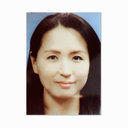An overexpression of chalcone reductase of Pueraria montana var. lobata alters biosynthesis of anthocyanin and 5'-deoxyflavonoids in transgenic tobacco.
Cuvinte cheie
Abstract
We isolated the chalcone reductase (pl-chr) gene of Pueraria montana var. lobata by using a PCR strategy from cDNA pools of storage roots. A high level of expression of RNA was found in both stems and roots. The genomic Southern blot result suggests that pl-chr exists as a member of a small gene family. By introducing a pl-chr gene under the control of the 35S CaMV promoter into the pink-flowering Xanthi line of Nicotiana tabacum, the flower color was changed from pink to white-to-pink. The contents of anthocyanin in the flowers of the transgenic lines were dramatically decreased by 40%, but the total UV absorption compounds remained unchanged. The production of liquiritigenin in pl-chr overexpressed transgenic tobacco lines was confirmed by HPLC and MS analysis. The introduction of pl-chr gene provides a method to redirect the flavonoid pathway into 5'-deoxyflavonoid production in non-legume crops, in order to manipulate the phenylpropanoid pathway for isoflavonoid production.


